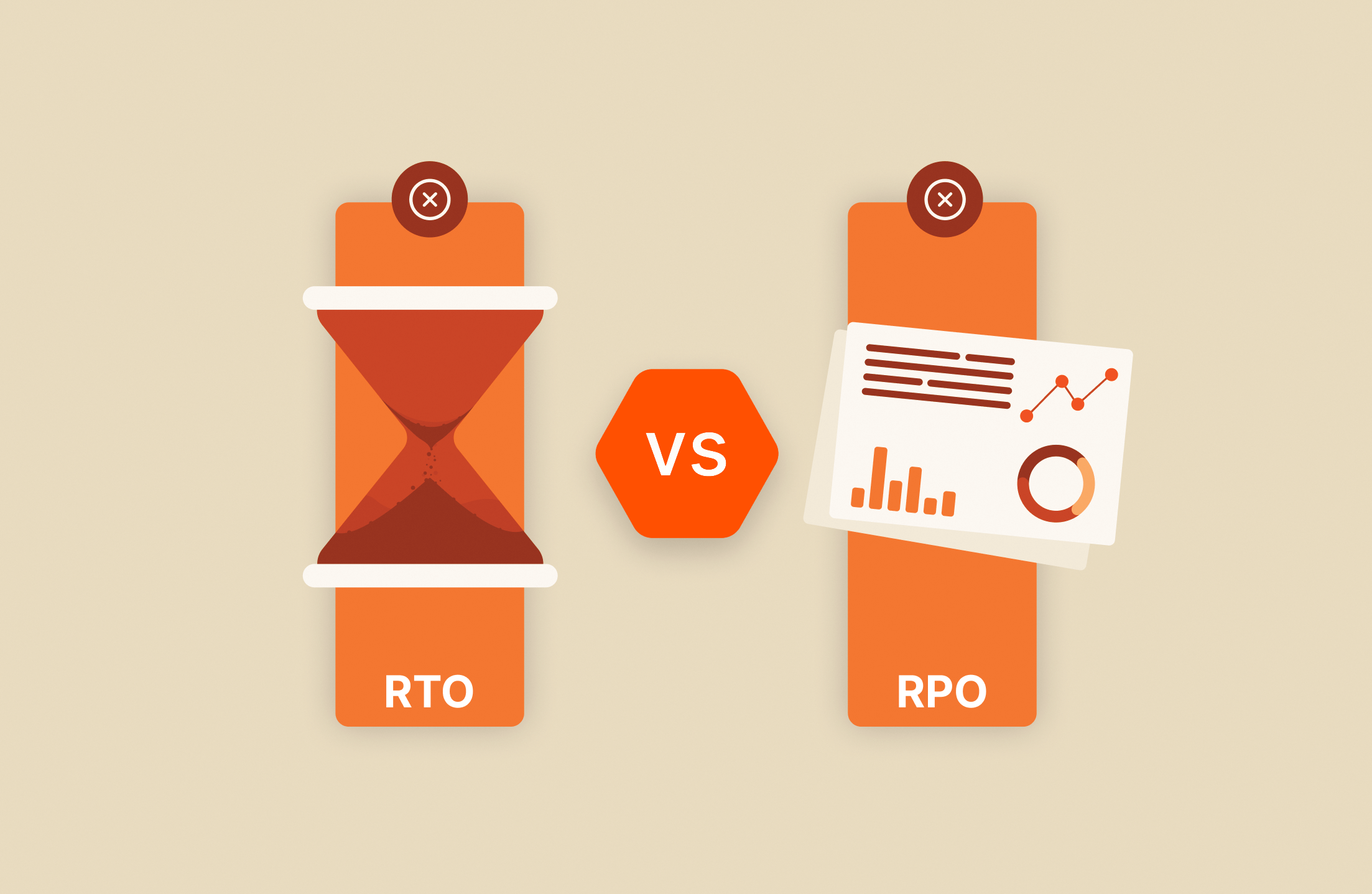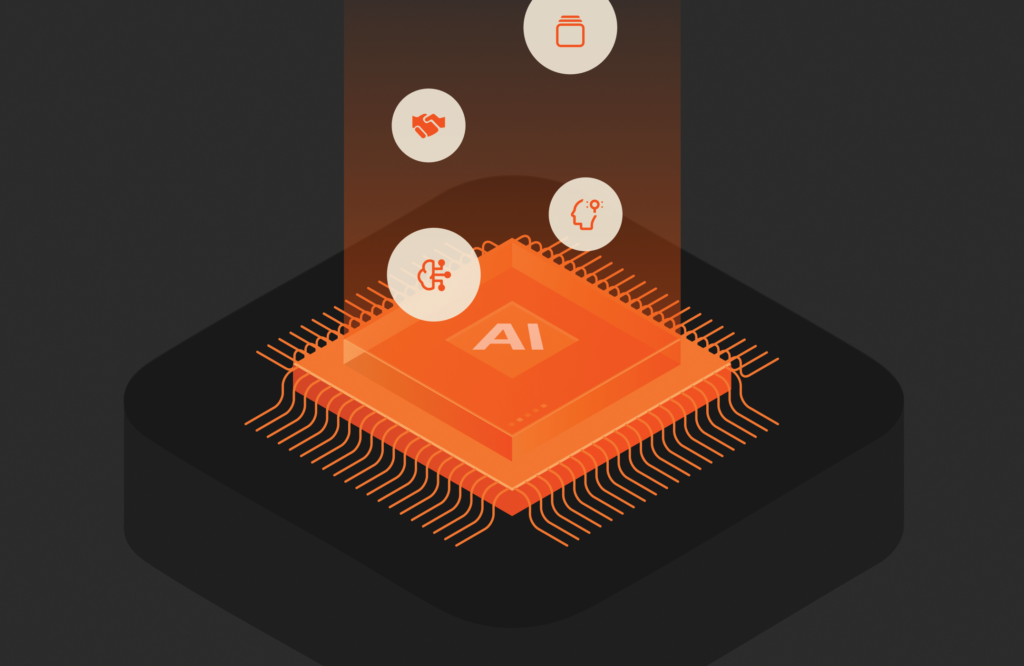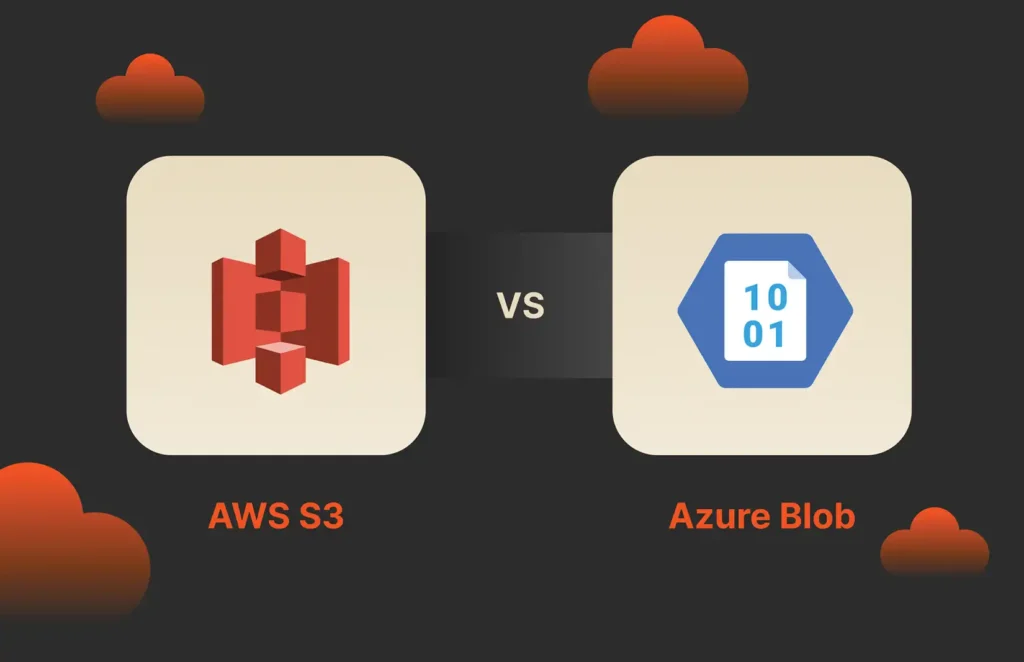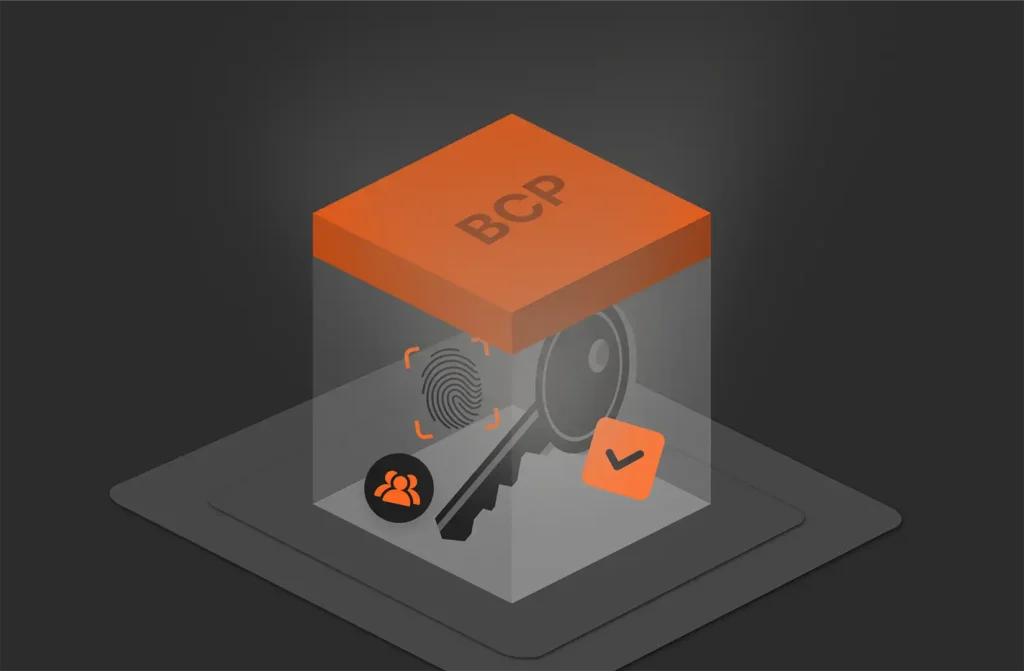Summary
Recovery time objective (RTO) and recovery point objective (RPO) are two concepts that are used in business continuity and disaster recovery planning to establish a business’s tolerance for data loss and recovery time in the event of a failure.
Recovery time objective (RTO) and recovery point objective (RPO) remain fundamental concepts in disaster recovery planning, but their implementation has evolved significantly in today’s hybrid cloud and AI-driven environment. While both still represent critical parameters for resilience planning, the technologies and strategies for achieving them have advanced considerably.
RTO defines how long a recovery may take before unacceptable levels of damage occur from an outage. Meanwhile, RPO defines the point in time when data loss resulting from an outage becomes unacceptable. Exceeding either threshold results in the same outcome: business disruption and potential financial impact.
This updated guide explores the key differences between RTO and RPO in the context of modern enterprise operations, provides implementation frameworks, and highlights how advanced technologies are transforming recovery capabilities.
Modern Understanding of RTO: Forward-looking
RTO represents the maximum acceptable downtime before business operations are significantly impacted. In 2025, RTOs have become increasingly granular – defined not just at the system level but per application tier and recovery scenario.
- Forward-Looking Time Metric: RTO is inherently forward-looking, focusing on future recovery time after an incident occurs. It answers the critical question: “How quickly must we restore operations?”
- Business Impact Correlation: RTO will vary between different systems based on their criticality to business functions. Very critical systems might require RTOs ranging from near-zero to four hours, while less critical systems may have RTOs ranging from hours to days.
- Resource Allocation Factor: Since no organization has infinite staff or resources, RTOs help prioritize recovery efforts. Systems supporting more important functions should receive priority during recovery operations.
- Scenario-Based Planning: Modern resilience strategies now incorporate variable RTOs based on the nature of the disruption (ransomware vs. hardware failure vs. regional disaster), acknowledging that recovery processes differ substantially between scenarios.
Contemporary RPO Framework: Backward-looking
RPO refers to the maximum acceptable amount of data loss, typically expressed in time, before business operations suffer material impact. The volume of tolerable data loss varies dramatically depending on the services provided by the affected system.
- Backward-Looking Data Metric: Unlike RTO’s forward focus, RPO is backward-looking, defining how far back in time you must be able to restore data. It effectively represents your backup frequency requirements.
- Data Criticality Assessment: Less critical data might not need frequent backups, while highly critical data requires robust protection. Evaluating data criticality to business processes remains key to managing appropriate recovery objectives.
- Data Change Velocity: Some data stores experience high volumes of changes, while others remain relatively static. Modern RPO planning accounts for data volatility when determining protection frequency.
- Cost-Risk Analysis: Backup frequency and methods have direct cost implications. A careful cost versus risk analysis remains essential for balancing protection against operational expenses.
Evolution to the 3-2-1-1-0 Strategy
The traditional 3-2-1 backup rule (three copies, two different media types, one off-site) has evolved to the more comprehensive 3-2-1-1-0 framework:
3 – Maintain at least three copies of your data (production plus two backups)
2 – Store copies on two different storage media types
1 – Keep one copy off-site
1 – Maintain one copy in an immutable or air-gapped format
0 – Ensure zero errors through automated recovery verification
This enhanced framework directly addresses modern threats like ransomware by ensuring that at least one data copy remains completely isolated from network-based attacks, while verification testing confirms recoverability.
Making RTO/RPO SMART
In 2025, effective disaster recovery planning requires setting SMART objectives that are:
- Specific: Define granular RTO/RPO targets per application tier and scenario rather than blanket policies. Critical database systems might require sub-hour RTOs, while analytics platforms could tolerate longer recovery windows.
- Measurable: Implement regular disaster recovery testing and tabletop exercises to validate that stated objectives are achievable. Recovery simulation technologies now allow non-disruptive validation of RTO/RPO attainability.
- Actionable: Document RTO/RPO in business continuity plans along with specific recovery procedures and responsibilities. Modern orchestration platforms can automate these procedures to minimize human error.
- Realistic: Set achievable objectives based on available technology and budget constraints. Understand the relationship between aggressive recovery targets and infrastructure investments.
- Time-bound: Regularly review and adjust objectives as business needs and technologies evolve. What was acceptable in 2023 may not meet competitive requirements in 2025.
SLA Perception vs. Reality: RPO and RTO
Many IT managers believe meeting their RPO and RTO service-level agreements is achievable. Yet research continues to show a significant gap between expectations and results.
High Expectations, Different Reality
Recent studies show that while organizations target rapid recovery (average RPO of 15-30 minutes), actual recovery capabilities often fall short, with most organizations unable to recover data more recently than 24-48 hours in major incident scenarios.
- Volume Challenges: The vast majority (71%) of one-day old recoveries involve less than 50 GB of data. However, past the one-day window, a significant jump occurs toward larger recoveries—longer time means more data, and likely more recovery resources.
- Verification Gap: Although organizations set aggressive RTOs, less than 30% regularly test their ability to meet these objectives through formal recovery exercises.
AI-Enhanced Recovery Management
Artificial intelligence is transforming how organizations approach RTO and RPO management:
- Predictive Failure Analysis: AI can identify potential system failures before they occur, allowing preemptive action that avoids the need for recovery altogether.
- Intelligent Data Tiering: AI enhances RTO by learning access patterns and proactively moving critical data to high-speed tiers before it’s needed during recovery.
- Anomaly Detection: Modern protection systems employ AI to identify abnormal data access patterns that might indicate ransomware attacks, automatically taking protective measures that preserve RPOs.
- Recovery Orchestration: AI-driven recovery orchestration tools can automatically sequence recovery tasks based on dependencies and criticality, significantly reducing manual intervention and accelerating restoration.
Cloud-Native Disaster Recovery
The evolution of cloud technologies has transformed disaster recovery architectures:
- Multi-Cloud Resilience: Organizations now leverage multiple cloud providers to eliminate single points of failure in their recovery strategies, ensuring geographical and vendor diversification.
- Container-Based Recovery: Containerization enables faster recovery through quick instance creation across regions, with applications and dependencies packaged together for rapid deployment.
- Cross-Region Replication: Cloud platforms now offer automated replication services that maintain near-zero RPO across geographical boundaries without the complexity of traditional DR solutions.
Disaster Recovery as a Service with Pure Protect
A modern cyber resiliency architecture significantly minimizes RTO and RPO by implementing robust backup and recovery solutions that ensure rapid system restoration after a cyber incident.
Pure Protect™//DRaaS delivers this capability through tailored solutions right-sized for businesses and their critical assets. Pure Protect keeps your data where you need it: in your custody and at your fingertips. By maintaining it in your AWS cloud, Pure Protect //DRaaS ensures that you can maximize recovery speed through cloud-preconfigured workloads.
Enhanced Features for 2025
- AI-Driven Recovery Optimization: Leverages machine learning to prioritize recovery operations based on business impact analysis
- Immutable Snapshot Technology: Prevents unauthorized modification of backup data, even by administrative users
- Automated Recovery Testing: Provides non-disruptive validation of recovery objectives without impacting production
- Multi-Cloud Orchestration: Enables seamless recovery across different cloud environments for ultimate flexibility
Pure Protect //DRaaS helps you test your backups and resilience in a segmented environment that maximizes your preparation for disasters while avoiding unwanted disruptions to your production environment.
Conclusion
Disaster recovery planning continues to be essential for business resilience. RTO and RPO remain the foundational metrics that translate technical capabilities into business outcomes. By thinking about recovery in terms of downtime hours and potential data loss, organizations can effectively communicate technical requirements in business terms.
The evolution of data protection technologies has dramatically expanded what’s possible in disaster recovery. Organizations now have access to tools that can deliver near-zero RPO and dramatically reduced RTO, even for complex environments. However, these capabilities must be matched with appropriate planning, testing, and investment to ensure that when disaster strikes, recovery objectives can be achieved in practice, not just on paper.

White Paper, 7 pages
Learn What’s Helping CISOs Sleep Better at Night
And how you can too.







